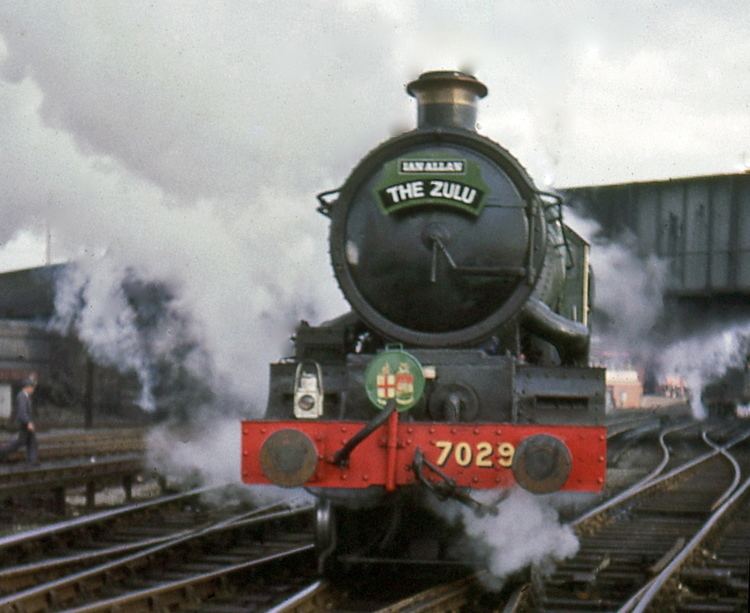 | ||
7029 Clun Castle is a railway locomotive, built to the Great Western Railway Castle Class design by the Western Region of British Railways at Swindon Works in May 1950 and named after Clun Castle. She is the newest castle to be preserved.
Contents
British Rail
Its first shed allocation was Newton Abbot, and had a double chimney and a 4 row superheater fitted in October 1959. Its most famous moment came on 9 May 1964 on the Plymouth to Bristol leg of a special train to mark the record set sixty years earlier by "City of Truro" when it was timed at 96 mph on the descent of Wellington Bank in Somerset. Its last shed allocation was Gloucester in May 1965. It hauled the last official steam train out of Paddington (to Banbury) on 11 June 1965. It was officially withdrawn (and believed to be the last operating Castle) in December 1965.
Preservation
Bought for its scrap value of £2,400 by Patrick Whitehouse in 1966, its ownership was then passed to 7029 Clun Castle Ltd. In preservation it has always been based at Tyseley TMD, now Tyseley Locomotive Works.
In 1967, carrying (non-authentic) Great Western livery it hauled trains to mark closure of the GWR route to Birkenhead, from King's Cross to Newcastle, and over the Settle-Carlisle Railway. In 1972 it joined in the "Return to Steam" tours. After a major overhaul, it emerged in British Railways livery in 1985. In 1986 it hauled the last train from the old Birmingham Moor Street station. In the mid 1980s some of the restoration work was undertaken by a government funded Community Programme scheme, managed by Sandwell Metropolitan Borough Council.
She is at present undergoing an overhaul with a possible return to traffic in summer 2016.
